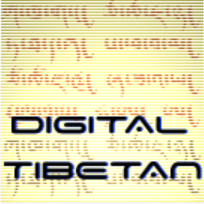Computers and Tibetan script#
Overview#
All current computers and operating system support working with Tibetan script.
Computer type |
Tibetan display |
Input methods |
Development |
Support |
|---|---|---|---|---|
+ + + |
+[1] |
+ |
+ |
|
+ + |
+ |
+ + + |
+ + |
|
+ + |
+ + + |
+ + + |
+ + |
|
+ + |
o[2] |
+ + |
- - |
I want to work with Tibetan texts, what’s the best choice for a new computer?#
Working with Windows: Windows comes with a Tibetan font and a Tibetan input method according to the Chinese standard: A Wylie input method is only available via a third-party plug-ins that have last been updated around 2012 (TISE) and 2018 (Tib-Type). If the focus might be on computational dharma, then Windows is not as good of a choice, posing more obstacles to getting things working than Linux.
Still, as of now Windows is a good choice for working with Tibetan texts.Working with Linux KDE or Gnome: For those who are technically well versed, Linux is the best choice: fonts and input methods are available, and the possibilities, especially, if natural language processing or computational dharma are areas of interest, then Linux (KDE or Gnome is just a matter of taste) is an even better choice. Technical problems and bugs can be fixed, because of open source. The trade-off is the higher technical complexity. Note: Gnome is currently the preferrable choice for Linux, since the required
ibusinput method is already integrated by default, while for KDE you need to install it manually, which might not always work as expected.Working with macOS: A good overall choice for most people is a macOS laptop: everything that’s needed to work with Tibetan is already part of the operating system macOS: Tibetan fonts, Sanskrit fonts, input methods for Tibetan (caveat[^1]) and Sanskrit diacritics are built in, and only some simple configuration steps are required to activate everything that’s needed. Things become problematic, if you ever encounter problems: Apple has basically no working support for bug tracking and improving situations for low-resource languages. Tibetan on Mac seems to be on slow decline.
